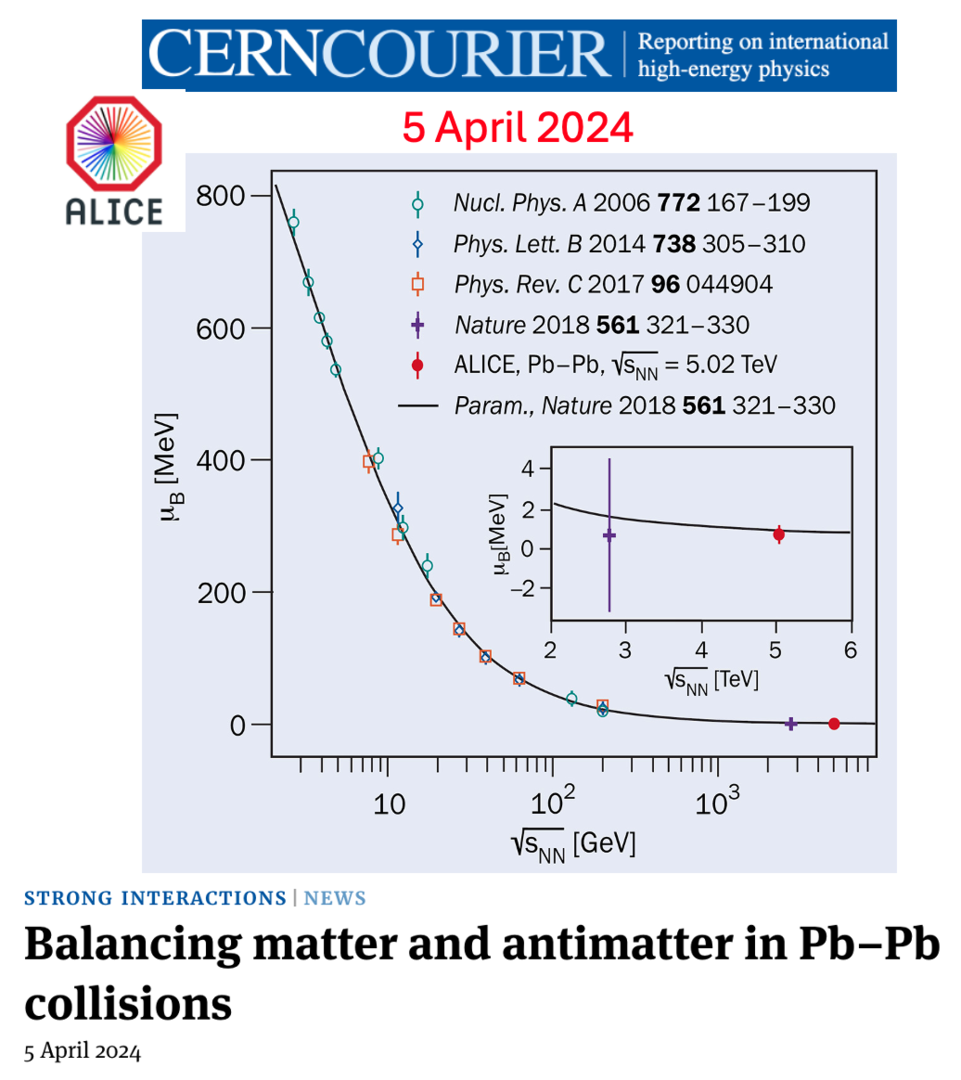
CERN Courier March-April 2024
When lead ions collide head-on at the LHC they deposit most of their kinetic energy in the collision zone, forming new matter at extremely high temperatures and energy densities. The hot and dense zone quickly expands and cools down, leading to the production of approximately equal numbers of particles and antiparticles at mid-rapidity. However, in reality, the balance between matter and antimatter can be slightly distorted.
The collision starts with matter only, i.e. protons and neutrons from the incoming beam. During the collision process, incoming lead nuclei interact while penetrating each other, and most of their quantum numbers are carried away by particles traveling close to the beam direction. Due to strong interactions among the quarks and gluons, quantum numbers of the colliding ions are transported to mid-rapidity rather than to the ions themselves. This leads to an imbalance of baryons originating from the initial state, which has more baryons than antibaryons.
This matter-antimatter imbalance can be quantified by determining two global system properties: the chemical potentials associated with the electric charge and baryon number (denoted μQ and μB, respectively). In a thermodynamic description, the chemical potentials determine the net electric charge and baryon-number densities of the system. Thus, μB measures the imbalance between matter and antimatter, with a vanishing value indicating a perfect balance.

In a new, high-precision measurement, the ALICE collaboration reports the most precise characterisation so far of the imbalance between matter and antimatter in collisions between lead nuclei at a centre-of-mass energy per nucleon pair of 5.02 TeV. The study was carried out by measuring the antiparticle-to-particle yield ratios of light-flavour hadrons, which make up the bulk of particles produced in heavy-ion collisions. The measurement using the ALICE central barrel detectors included identified charged pions, protons, and multi-strange Ω–baryons, in addition to light nuclei, 3He, triton and the hypertriton (a bound state of a proton, a neutron, and a Λ-baryon). The larger baryon content of these light nuclei makes them more sensitive to baryon-asymmetry effects.
Further reading: ALICE Collab. 2023 arXiv:2311.13332
